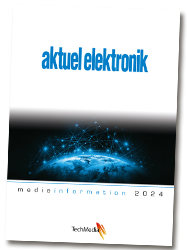
Noise pollution directly affects the quality of life and health. With Digilent Pmod MIC3 and Digital Discovery, you can create a cloud-based noise pollution monitor to assess the noise impact.
The Pmod MIC3 is a MEMS Microphone powered by the Knowles Acoustics SPA2410LR5H-B microphone and the Texas Instruments ADCS7476 analog-to-digital converter. The Pmod MIC 3 communicates on SPI interface and is connected to the Digital Discovery’s digital I/O lines. The Digilent Digital Discovery is a combined USB logic analyzer, protocol analyzer, and pattern generator. WaveForms is the virtual instrument suite for the Digital Discovery. It gives you access to all instruments including:
- 32-channel digital logic analyzer (1.2…3.3V CMOS, 8 channels at 800MS/s*, 16 channels at 400MS/s*, and 32 channels at 200MS/s)
- Protocol Analyzer Featuring Digital Bus Analyzers (SPI, I²C, UART, CAN, AVR)
- 16-channel pattern generator (1.2…3.3V CMOS, 100MS/s)
ThingSpeak, created by MathWorks, is a free online platform for collecting, viewing, and analyzing data in the cloud. ThingSpeak allows you to aggregate, visualize, and analyze live data streams. We use ThingSpeak to run the data analysis and display the result. Python is used to convert the measured data from Pmod MIC3 and upload the results to ThingSpeak. We load Waveforms library and import request module. The request module lets us send the data to Thinkspeak.
The results of the measurements are averaged, then converted to dB (this conversion is just an approximation of the true noise level). The measured noise levels can be plotted against time, or displayed on a gauge widget. A histogram of the measured values can also be displayed, along with a virtual LED, to indicate dangerous noise levels.
Get the project source code and project details on the Digilent Reference Page.
Digital Discovery is available on Elfa Distrelec.



